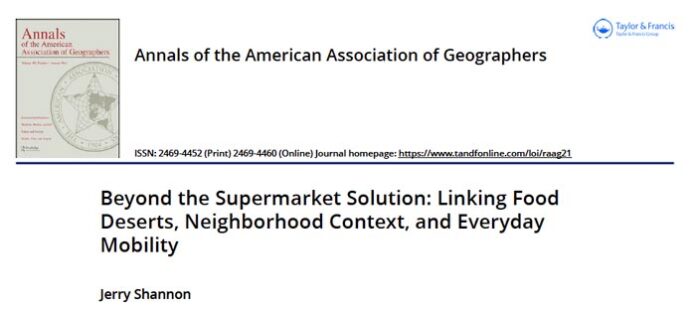Abstract from the Annals of the American Association of Geographers:
Most research on urban food deserts has employed spatial measures of accessibility, recording distances to various food stores from place of residence. Despite the popularity of this approach, empirical support for its prediction of dietary and health outcomes has been inconsistent. One reason might be the ways in which food deserts frame food access as fundamentally an issue of food supply. This article suggests a complementary approach that examines how store characteristics, neighborhood context, and individual mobility interact to shape food provisioning practices. I recruited thirty-eight participants living in two low-income neighborhoods of Minneapolis, Minnesota, tracking their daily mobility and the food sources they used over a five-day study period. Follow-up interviews gathered more information on the food stores used by participants. Project results show that participants were highly mobile in their food shopping, visiting 153 different locations on 217 different shopping trips at an average distance of 3.4 km from home. Reported store quality was closely tied to neighborhoods’ economic and racial composition, and in several cases, food purchasing and consumption occurred en route to other destinations. Future research on urban food access could benefit by studying how food access is intertwined with broader livability issues such as housing and transportation.
Link to “Beyond the Supermarket Solution” in Taylor & Francis’s Online Database.








